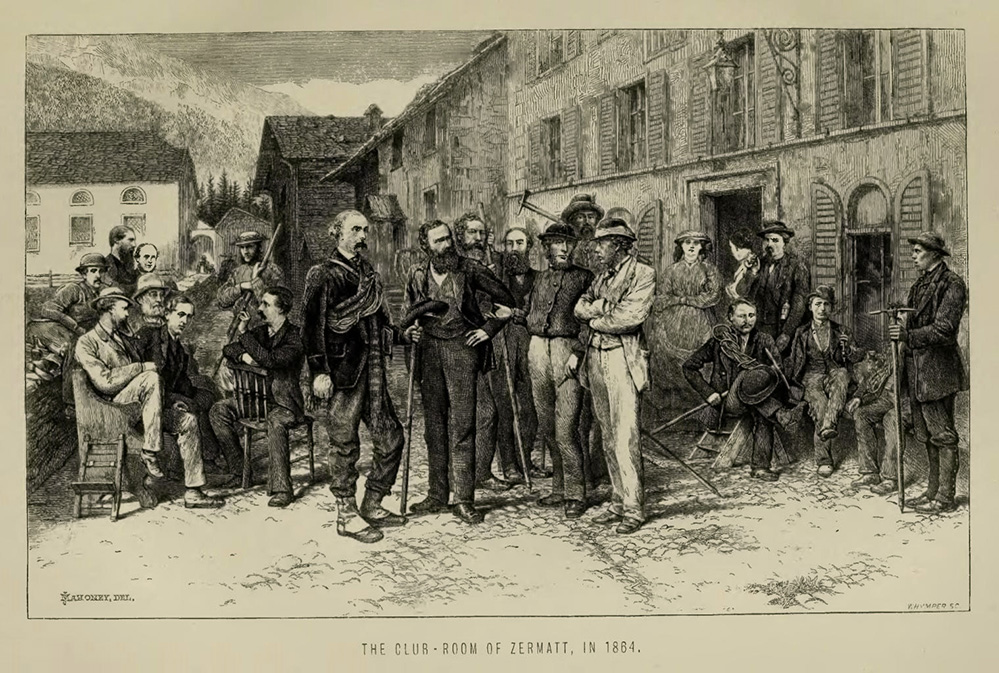16 – Additional Background on the History of Mountaineering and Alpine Shelters
Throughout history, mountains have served as natural barriers that delineated different ethnic populations from one another or held religious significance to certain cultural groups. The Ancient Greeks believed Mount Olympus was the birthplace of the gods because of its proximity to the heavens. In 300 BC, when the Romans began constructing roads to improve travel within Italy and the wider Roman Empire, mountains were still admired from afar.
It wasn’t until 1492 that the sport of mountaineering began, when Antoine de Ville and a small team, using ropes and ladders, ascended Mont Aguille in France. This is considered the first ever recorded technical ascent. While mountaineering continued in Europe, it wasn’t until the early 19th century that the sport of mountaineering became a popular pursuit globally.

The Alpine Club’s Club Room as illustrated by Edward Whymper in 1864 and depicts the ‘golden age of mountaineering’.
In 1857, the Alpine Club was formed in London, England, and was the first mountaineering club founded in Europe. The years 1857 to 1865 are considered the golden age of mountaineering.

Gruenhornhutte was the first but the Swiss Alpine Club built nearly 40 alpine huts in the Swiss Alps in the first 25 years of its existence
The 1860s brought more alpine clubs to continental Europe, in Switzerland, Austria, Germany, and Italy. The Swiss Alpine Club was the first club to build a structure in the alpine in 1863. The hut supported club mountaineering activities in the Glarus Alps.
Mountaineering in North America started in the early 19th century but most of the technical climbs that involved ropes and additional safety equipment were not attempted until the early 20th century. The Appalachian Mountain Club was the first mountaineering club formed in North America in 1876 and in 1889, the club constructed the first North American alpine hut in the White Mountains at Madison Springs. The American Alpine Club was formed in 1902 and the club began publishing the American Alpine Club Journal and Accidents of North American Mountaineering.

